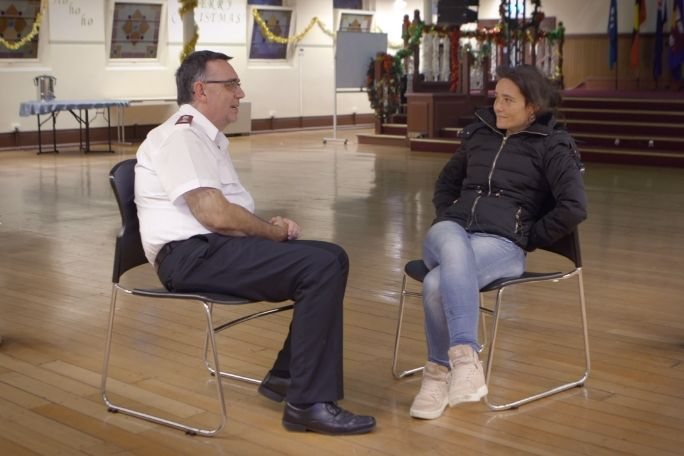Lesson summary
In this lesson, students will consider poetry, and how this form of writing explores our human experience. They will watch a short clip from Life After The Oasis that features Haley, who writes poetry to better understand her own life experiences, OR Owen who writes music lyrics. Students will view a TED-Ed video that digs deeper into poetry as a writing form, then read through a list of poetic devices. They will apply their understanding by viewing a spoken word poem and identifying its poetic devices. They will then plan, draft and write their own poem, before reflecting on the lesson by responding verbally to a set question.
Learning intentions:
Students will...
- understand the purpose of poetry and how it explores our ‘humanness’
- understand what poetry is, as well as some poetic devices used to create meaning in poems
- understand how to use poetic devices to share a human story and to create an image in the reader's head about that story
Success criteria:
Students can...
- describe what a poem is
- identify at least two poetic devices in a poem, and suggest how they contribute to the meaning of the poem
- write their own poem, using one or more poetic devices
Lesson guides and printables
Lesson details
Curriculum mapping
Australian curriculum content descriptions:
Year 9 English:
- Understand that authors innovate with text structures and language for specific purposes and effects (ACELA1553)
- Explain how authors creatively use the structures of sentences and clauses for particular effects (ACELA1557)
- Identify how vocabulary choices contribute to specificity, abstraction and stylistic effectiveness (ACELA1561)
- Explore and reflect on personal understanding of the world and significant human experience gained from interpreting various representations of life matters in texts (ACELT1635)
- Investigate and experiment with the use and effect of extended metaphor, metonymy, allegory, icons, myths and symbolism in texts, for example poetry, short films, graphic novels, and plays on similar themes (ACELT1637)
- Review and edit students’ own and others’ texts to improve clarity and control over content, organisation, paragraphing, sentence structure, vocabulary and audio/visual features (ACELY1747)
Year 10 English:
- Analyse and explain how text structures, language features and visual features of texts and the context in which texts are experienced may influence audience response (ACELT1641)
- Compare and evaluate how ‘voice’ as a literary device can be used in a range of different types of texts such as poetry to evoke particular emotional responses (ACELT1643)
- Create literary texts that reflect an emerging sense of personal style and evaluate the effectiveness of these texts (ACELT1814)
- Create literary texts with a sustained ‘voice’, selecting and adapting appropriate text structures, literary devices, language, auditory and visual structures and features for a specific purpose and intended audience (ACELT1815)
- Review, edit and refine students’ own and others’ texts for control of content, organisation, sentence structure, vocabulary, and/or visual features to achieve particular purposes and effects (ACELY1757)
Syllabus outcomes: EN5-2A, EN5-3B, EN5-1A, EN5-7D, EN5-4B, EN5-5C.
General capabilities: Literacy, Ethical Understanding, Critical and Creative Thinking, Personal and social capability
Relevant parts of Year 9 achievement standards: By the end of Year 9, students analyse the ways that text structures can be manipulated for effect. They analyse and explain how images, vocabulary choices and language features distinguish the work of individual authors. They evaluate and integrate ideas and information from texts to form their own interpretations. Students understand how to use a variety of language features to create different levels of meaning. In creating texts, students demonstrate how manipulating language features and images can create innovative texts.
Relevant parts of Year 10 achievement standards: Students evaluate how text structures can be used in innovative ways by different authors. They explain how the choice of language features, images and vocabulary contributes to the development of individual style. They develop and justify their own interpretations of texts. They evaluate other interpretations, analysing the evidence used to support them. Students show how the selection of language features can achieve precision and stylistic effect. They develop their own style by experimenting with language features, stylistic devices, text structures and images. Students create a wide range of texts to articulate complex ideas. They demonstrate understanding of grammar, vary vocabulary choices for impact, and accurately use spelling and punctuation when creating and editing texts.
Unit of work: Life After The Oasis – English – Years 9 & 10
Time required: 90 mins
Level of teacher scaffolding: Medium – facilitate class discussion
Resources required
- Student Worksheets – one copy per student
- Device capable of presenting a video to the class
- Handling Sensitive Topics And Controversial Issues Factsheet (optional)
- Poetic Devices Factsheet (Optional). 5-10 dice (optional)
Skills
- Communication
- Creativity
- Critical thinking
- Empathy
- Social skills
Additional info
This resource has been adapted from ‘Teaching Social Issues Through English’ developed with the English Teachers Association NSW and the ‘Youth Homelessness Matters Resource’ developed by Janice Atkin. You can find these resources here.


Welcome back!
Don't have an account yet?
Log in with:
By signing up to Cool.org you consent and agree to Cool's privacy policy to
store, manage and process your personal information. To read more, please see
our privacy policy here(Opens in new tab).
Create your free Cool.org account.
Many of our resources are free, with an option to upgrade to Cool+ for premium content.
Already have an account?
Sign up with:
By signing up to Cool.org you consent and agree to Cool's privacy policy to
store, manage and process your personal information. To read more, please see
our privacy policy here(Opens in new tab).